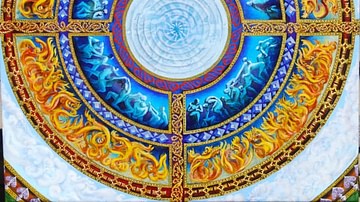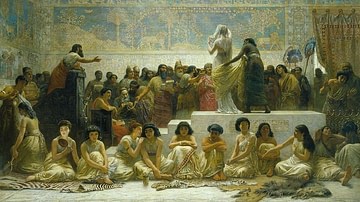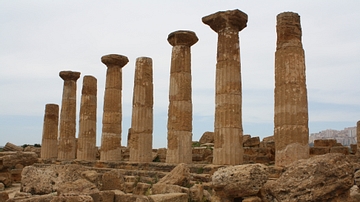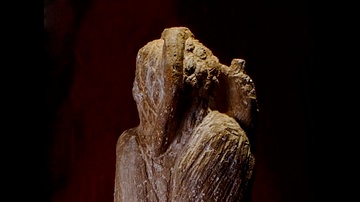Search Images
Browse Content (p. 1671)

Image
The Four Elements
The Four Elements. Painting by Mana Lesman. Used with the permission of the artist.

Image
Babylonian Marriage Market
Babylonian Marriage Market by Edwin Long, 1875 CE, Royal Holloway College, London.

Image
Marriage of Inanna and Dumuzi
On this Sumerian relief, the marriage of the goddess Inanna and the Sumerian King Dumuzi is depicted.

Image
Temple of Hercules, Agrigento
The remaining columns of the Temple of Hercules, Agrigento, Sicily. Built in the 6th century BCE, the temple originally had 6 columns on each facade and 15 along the sides.

Image
Ahriman Statue Front View
Statue of Ahriman from a Mithraic Temple
Unknown provenance, 1st century BCE - 3rd century CE (not yet on display)
![Ahriman Statue Side View [2]](https://www.worldhistory.org/img/c/p/360x202/2631.jpg?v=1723047966)
Image
Ahriman Statue Side View [2]
Statue of Ahriman from a Mithraic Temple
Unknown provenance, 1st century BCE - 3rd century CE (not yet on display)

Image
Ahriman Statue Back View
Statue of Ahriman from a Mithraic Temple
Unknown provenance, 1st century BCE - 3rd century CE (not yet on display)
![Ahriman Statue Side View [1]](https://www.worldhistory.org/img/c/p/360x202/2630.jpg?v=1613703602)
Image
Ahriman Statue Side View [1]
Statue of Ahriman from a Mithraic Temple
Unknown provenance, 1st century BCE - 3rd century CE (not yet on display)

Image
Roman Cavalryman Reconstruction
A reconstruction model of a Roman cavalryman and horse. A helmet with moveable cheek-pieces, metal armour, long sword and lance were the typical equipment of Roman cavalry members. (Roman Museum Canterbury, UK).

Image
Mourning Scene, Roman Sarcophagus
A scene of mourning from a Roman child's sarcophagus. Marble, 2nd century CE, Roman cemetery at Agrigento, Sicily.